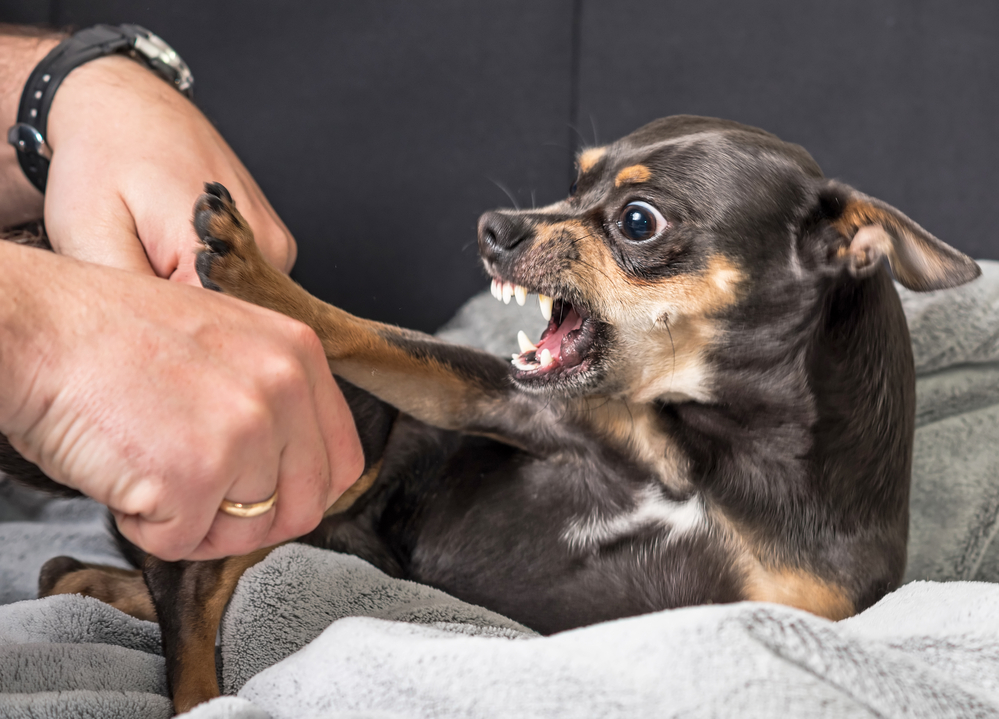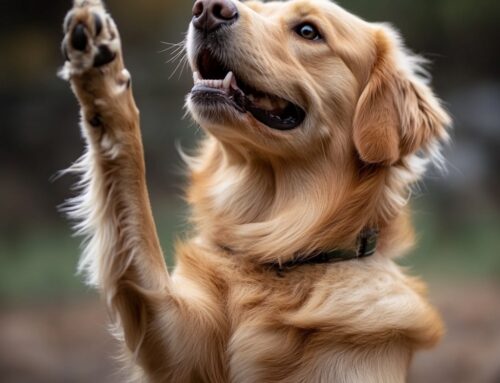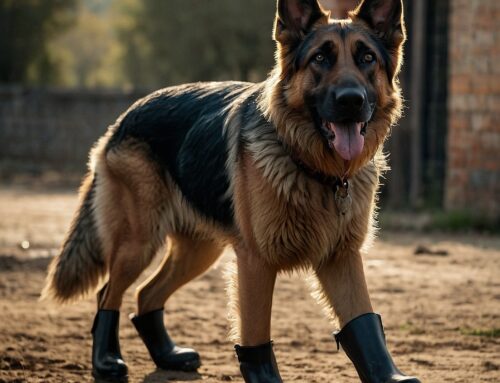by Rebecca R.
My family’s first dog had a short left ear. The shelter staff believed that our pup, found as a two-month-old stray, suffered an injury to this ear in a dogfight. But it was all healed up now and appeared to be the extent of the fight’s damage until, over time, our dog began exhibiting aggressive behavior towards other dogs while on walks. With no signs of this being due to pain, it seemed likely to be fear aggression.
What is Fear Aggression?
Fear aggression is a learned behavior that includes but is not limited to barking, lunging, growling, and even biting in a dog’s attempt to protect themselves. The fear driving this behavior can be of people, dogs, or a combination of both. With a fear of people, it can be individuals in general or specific types of people, like men or children. This can indicate that a dog may have had a negative experience with this particular type of person. Regarding children, shyer dogs may not care for the sounds of screaming children.
Fear of other dogs generally signifies a previous dogfight experience. This seemed to be the case with my family’s dog. While former bad experiences are likely to explain fear aggression, it can also be a matter of genetics and personality. Like humans, no two dogs are exactly alike.
Displays of fear aggression can differ. Some dogs will act out preemptively in the mindset of, “I’m going to get you before you get me.”
Other dogs will display a fearful demeanor and exhibit trembling, hiding, tucking their tail, and attempting to escape, but may bite if someone tries to reach out to pet them.
What Can Pet Parents Do?
Because fear aggression can worsen over time, it’s vital to address this behavior. What can pet parents do to help correct this behavior? A foundational factor in managing fear aggression is for your dog to know that you are in charge and can be trusted to protect and take the lead in any situation.
When a dog isn’t sure of this, it will try to make decisions on its own. An effective way to establish a dog’s confidence in your leadership is obedience training. Through the training, dogs will not only learn crucial obedience skills, but they will also learn to look to their owners to lead and make the right decisions. It’s important to remember that training cannot change a dog’s personality, but it can teach a dog to behave appropriately in once triggering situations. These changes won’t happen overnight, but fear aggression can improve over time with consistency and persistence in the training process.
Need More Help?
Performance K9 Training has helped countless pet parents with dogs who exhibit aggression through our behavior modification programs. Contact us today to learn more about how we can help!








